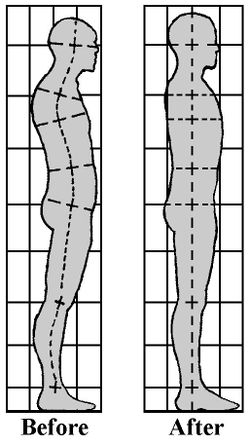Structural Integration
Structural Integration (SI) also known as Rolfing® is a scientifically validated body therapy. It is a system of manual therapy and sensorimotor education that aims to improve human biomechanical functioning as a whole rather than to treat particular symptoms. It was developed and propagated by the biochemist Ida Pauline Rolf (1896–1979) in the mid- and late 20th century Unlike massage, Structural Integration focuses not on the muscles but on their protective layer, called fascia (also known as connective tissue). Muscles are contracting tissues that give the body and organs physical movement. The fascia surrounds the muscles, bones and organs in the body. The fascia gives muscles their shape and the body its structure.
S.I primarily deals with the person's relationship with gravity. When a person is out of balance and alignment, gravity drags on their structure. Then posture is rigid or slumped, movement is compromised and restricted, and chronic pain may be present. Structural Integration aligns and balances the body by lengthening and repositioning the fascia. As fascia is lengthened it allows the muscles to move more efficiently. The practitioner will apply pressure to the body, working the entire fascial system in a systematic way. When restricted fascia is released and lengthened the body can return to its structurally optimal position. The continuing pull of gravity, the stress of daily activities and physical injuries can pull the body out of alignment. The fascia gradually shortens, tightens and adjusts to accommodate the misalignment. When the body is out of alignment it creates inefficiency and imbalance resulting in stiffness, discomfort and loss of energy.
The process of balancing the body is performed through 10 sessions of movement education, each of 2 hours duration. The massage-like sessions emphasize re-aligning, re-educating, & re-balancing the body's structure. It works by creating length and space within the soft tissue through gentle touch and pressure. The therapist assists the release of old patterns in the body that have been locked in as the result of the stresses of daily life, injury, illness, and/or physical or emotional trauma. S.I. allows the body to attain harmony at rest and in movement.
Health benefits and Uses of Structural Integration
When a body is aligned and balanced it moves with greater ease. It requires less energy to function. Good posture is effortless and breathing is easier. The body becomes more flexible, more coordinated and athletic performance improves.
- effective in improving posture, eliminating chronic pain, treating back and neck problems, increasing breathing capacity, and improving energy and vitality.
- facilitates the personal transformation process.
- removes blocks and restrictions on all levels- physical, psycho-emotional and energetic.
- Chronic aches and pains reduced and often alleviated altogether
- Movement feels more fluid and flexible
- Reduced stress.
- Increased flexibility
- Lightness, energy and resilience
- Reduced chance of injury
- Increased height through improved alignment
- A slimmer profile derived from a straighter posture
